
I spent a few weeks in New York City this summer, and am thrilled to have finally visited the High Line public garden.
Ever since its grand opening in 2009, I’ve been dying to see the transformation of this abandoned, defunct elevated railway into one of the city’s most inspiring and innovative public gardens.
I’d like to share with you some of the High Line highlights, but first a little background…
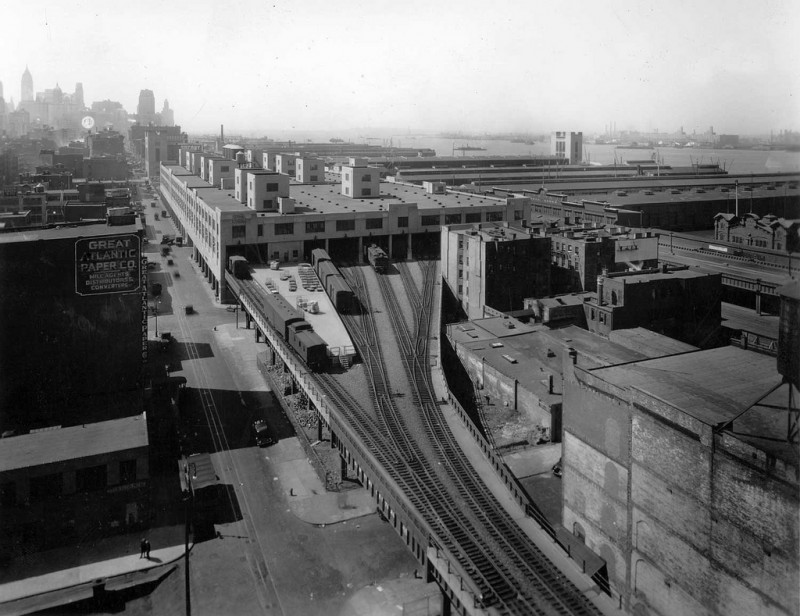
In the early 1900’s, this area was the largest industrial area of Manhattan, transporting meat, produce and dairy throughout the entire city.
In an effort to remove the dangerous freight trains from the already too-congested streets below, an elevated railway system was created, known as the Life Line of New York.
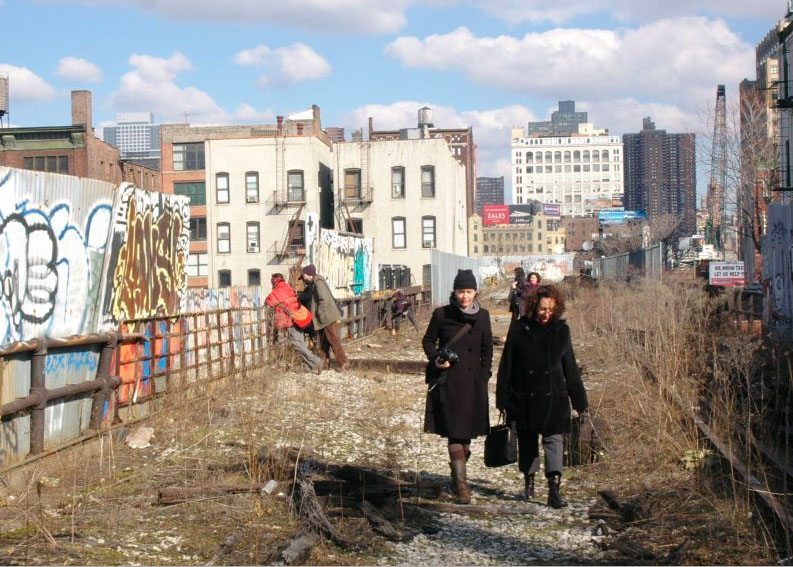
The High Line’s last run was in the 1990s, and there it sat slowly deteriorating into a powerfully unattractive eyesore.
Until, that is, the creative collaboration between James Corner Field Operations, Diller Scofidio + Renfro, and planting designer Piet Oudolf joined forces.
Behold, the High Line Garden!
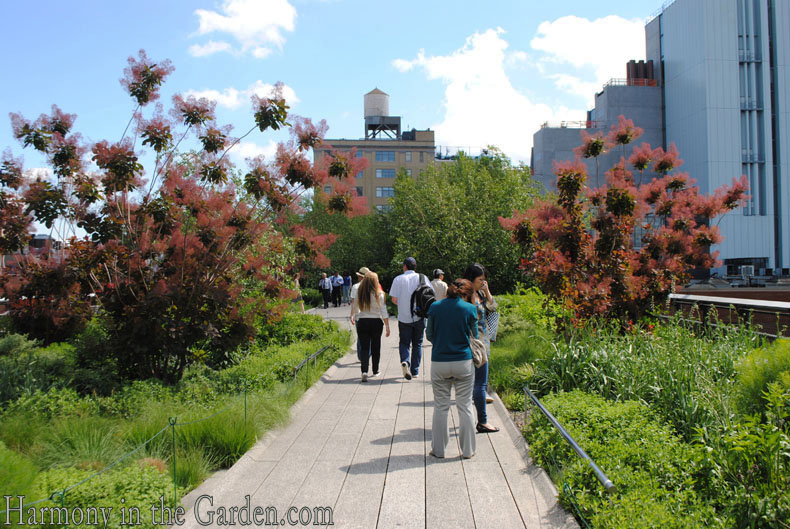
Whenever I’m asked which designers have influenced me the most, the work of Piet Oudolf is always at the top of my list.
His naturalistic designs are the perfect combination of deliberate forethought and random chance.
The results are some of the most subtle yet stunning gardens I’ve ever seen.
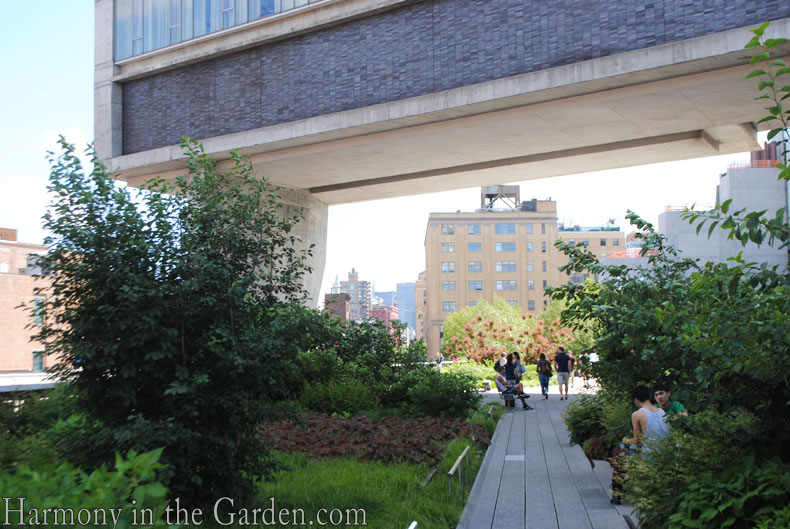
The High Line is a long and narrow public garden stretching over 1 1/2 miles, and elevated high above the streets below.
Carefully set in a naturalistic pattern are hundreds of plant species, the vast majority being natives.
In fact, in one section alone, 161 of the 210 plant species used are native to New York.
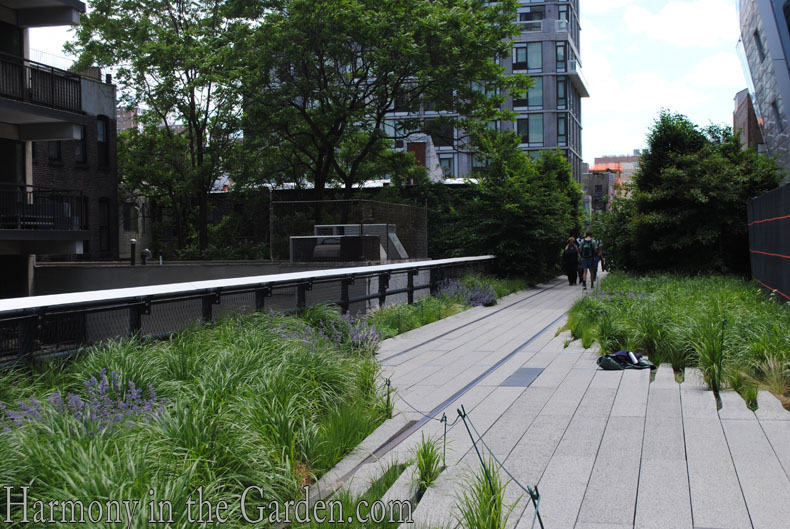
One of the first things I noticed are the plank-like pathways, and how important they are to the flow and feel of the garden.
To avoid the bowling-alley effect that’s so common in long and narrow gardens, the pathways here vary throughout the space.

The pathways are a combination of straight sections that gradually transform into areas of asymmetrical patterns.
The result is a garden that meanders, encouraging guests to leisurely stroll from one section to the next.

There are several different gardens, or zones, that wind throughout the 1.5 acres (click here to read about them all.)
One of my very favorites is the middle section which has a prairie-like feel to it, brimming with native grasses, wildflowers and perennials.

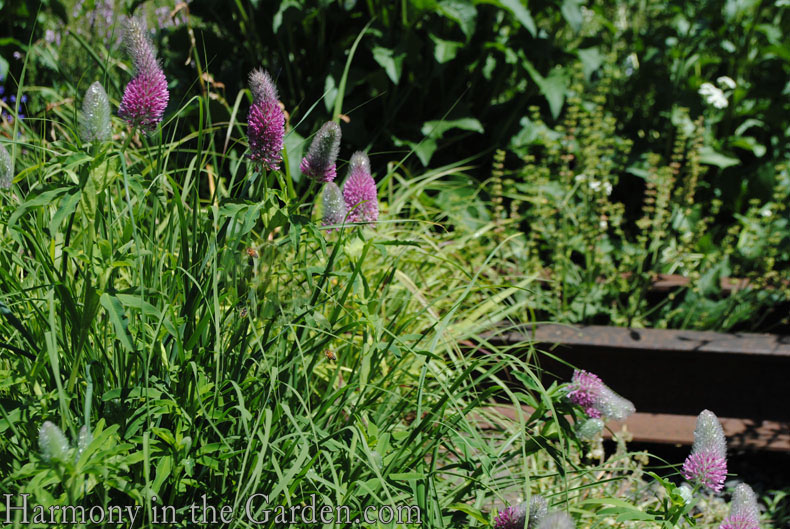

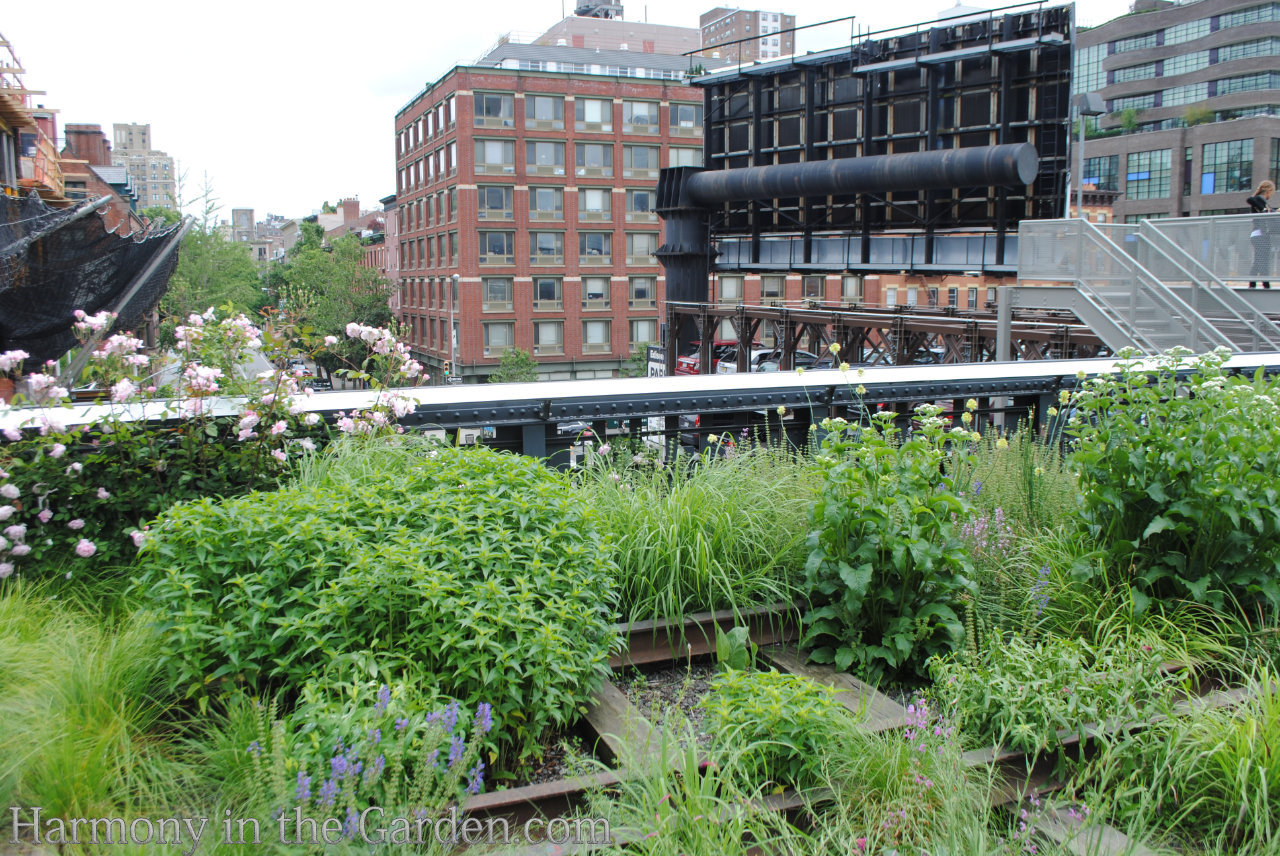

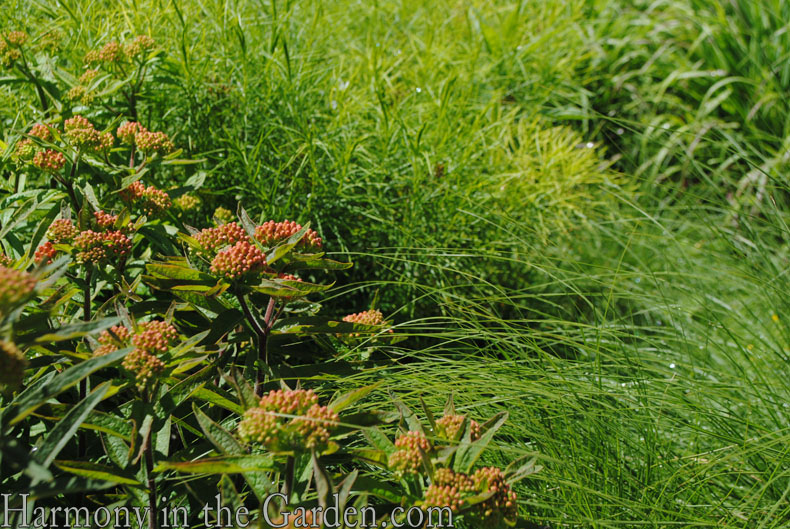
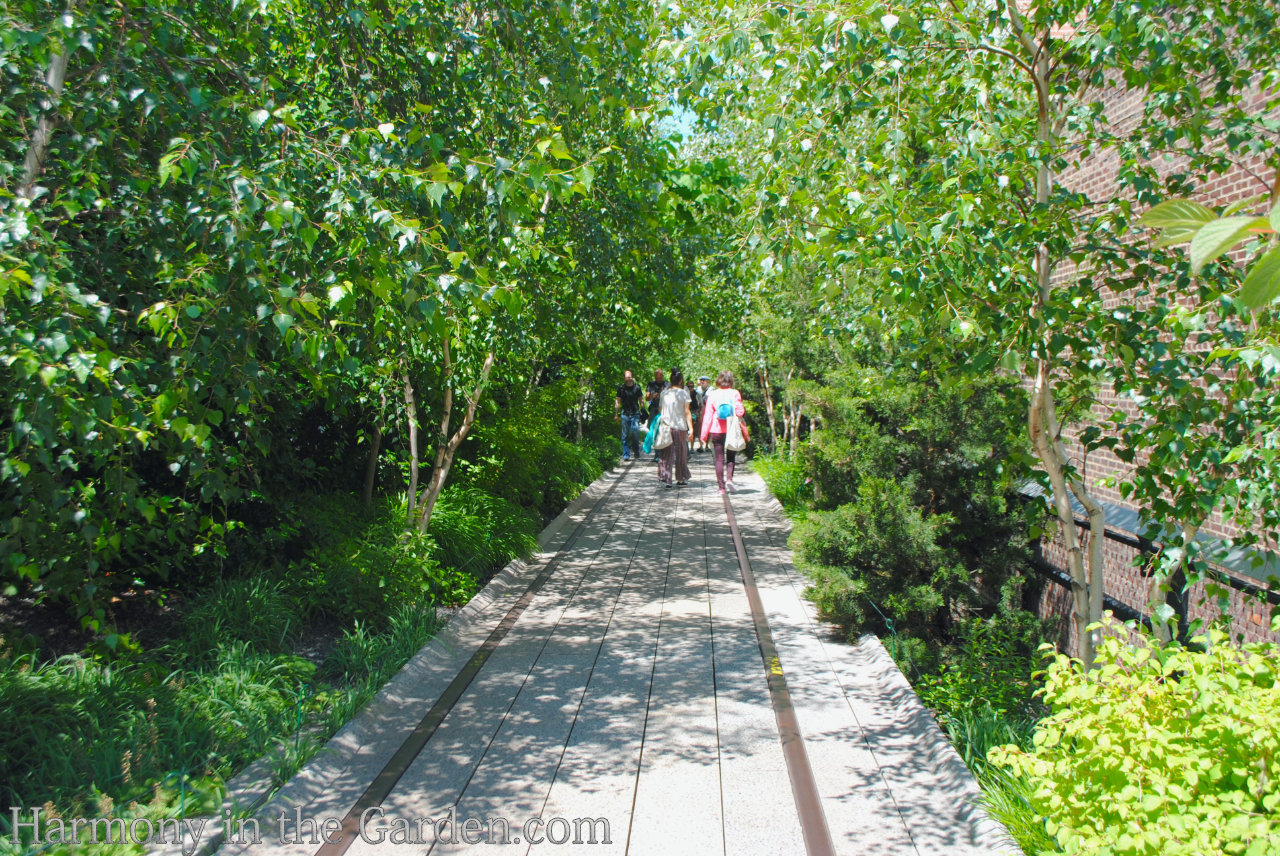
After awhile, you’ll come upon another zone that has a cool, woodland-like feel to it.
The shade is quite refreshing on a hot summer day, and I spent quite a while cooling off here, before moving on.
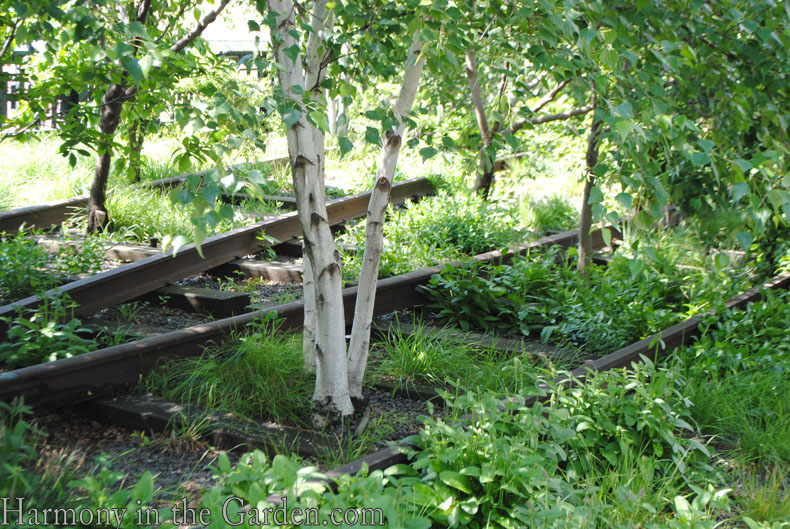
In this area, understory plants happily grow in the dappled shade of birch, dogwoods, and magnolia trees.
Some of my favorites are the Bowman’s Root (porteranthus trifoliatus), grasses (fescues, carex and Little Blue Stem), and ‘Copper’ iris.


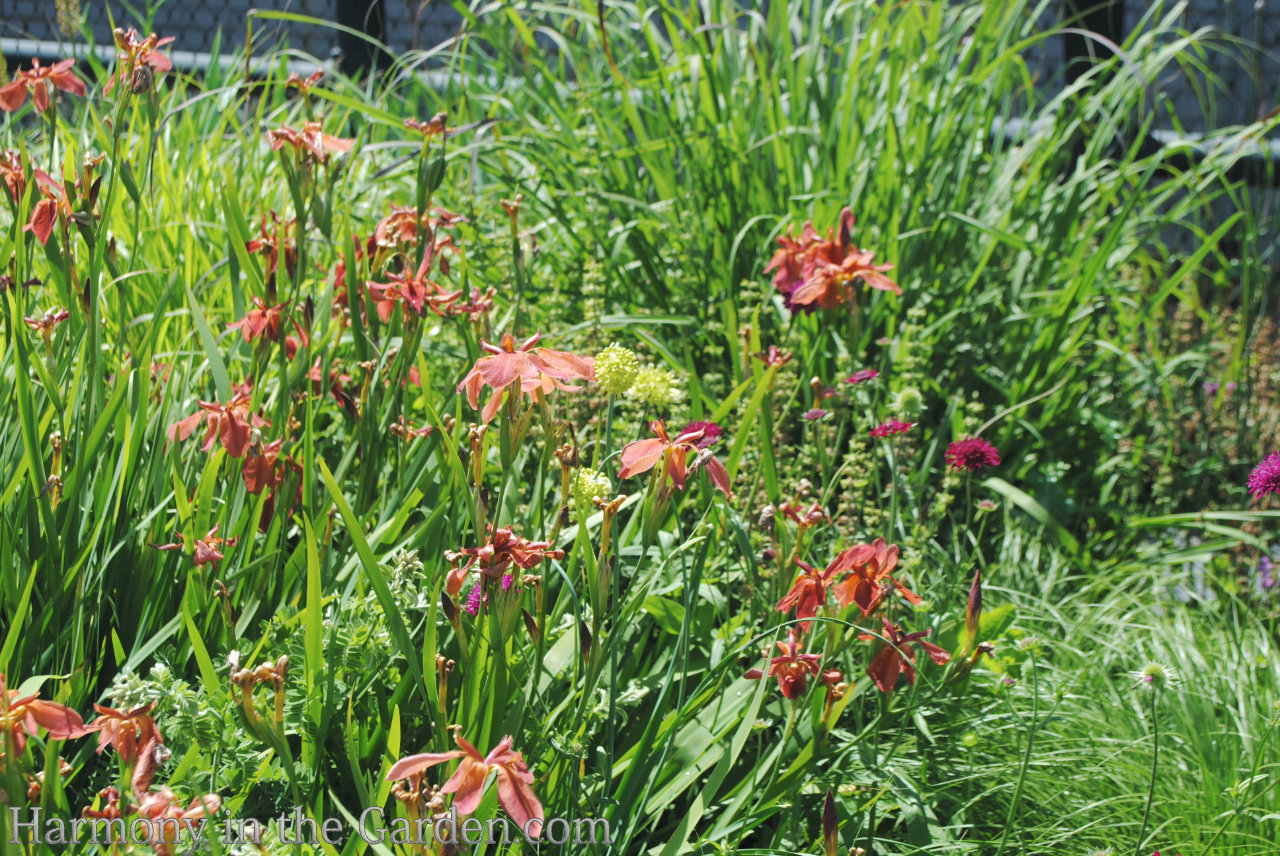
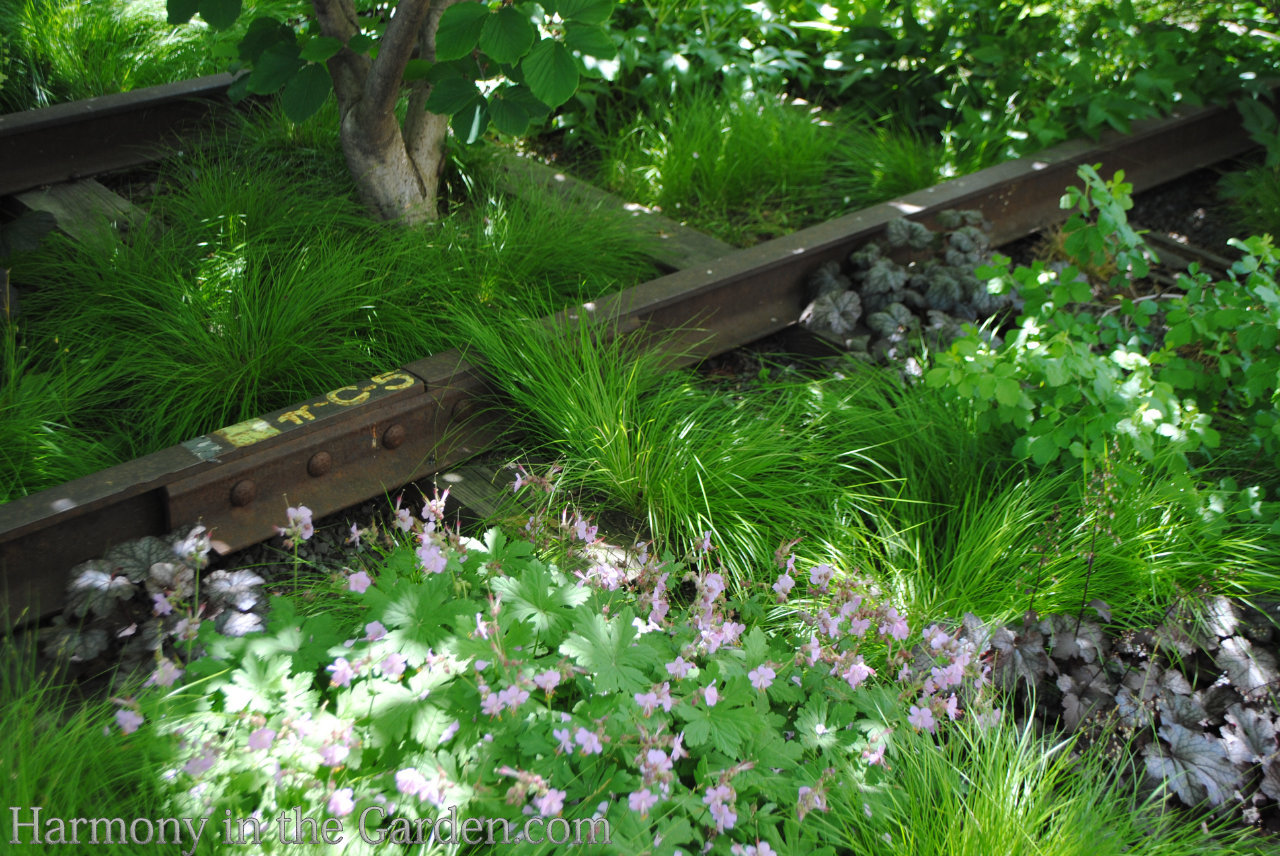

The grove of magnolias not only provides intoxicating scent, but also much-appreciated nectar for hungry bees.
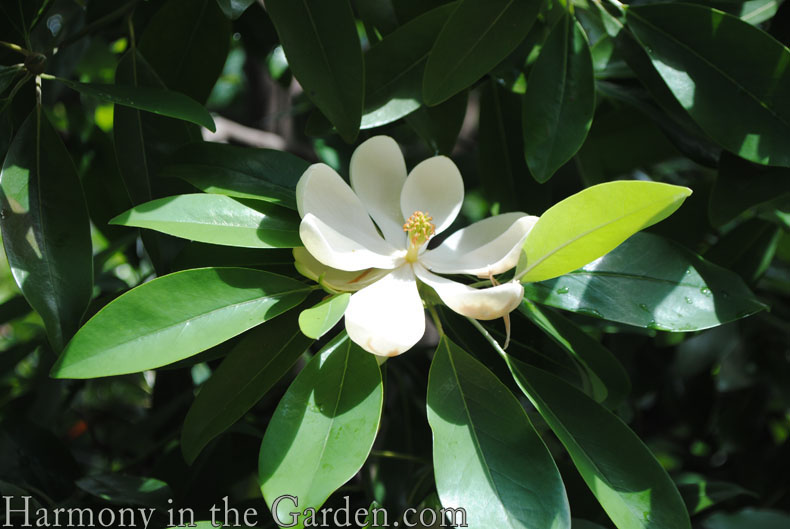


Part of Piet’s genius is his ability to create densely planted areas that are full and overflowing, yet don’t appear chaotic and overwhelming.
This is because the plants are placed in large drifts, with a focus on contrasting shapes, textures, and forms.
For example, take a look at the vertical rockets of the astilbe which seem to pierce the air (left.)

It’s the contrasting shapes of the vertical flowers, that allow them to stand out among the surrounding wispy blades of the carex grasses (left.)
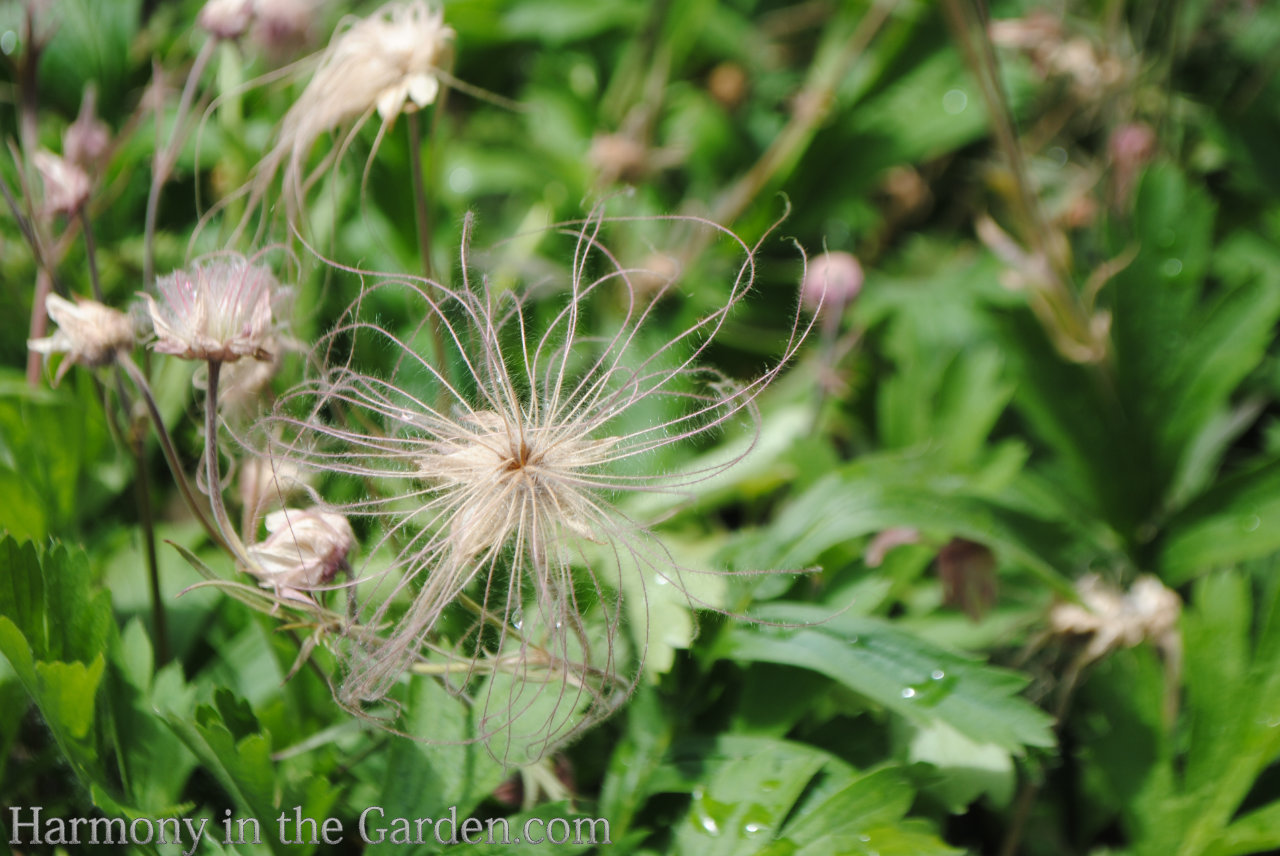
Other strong shapes include the twirling seed heads of the geum triflorum, the waving wands of the Goat’s Beard (aruncus ‘Horatio’), the pink puffy clouds of the Smoketree bush (cotinus ‘Pink Champagne’,) and the round magenta globes of the knautia and alliums that appear to float and bob above the rest.
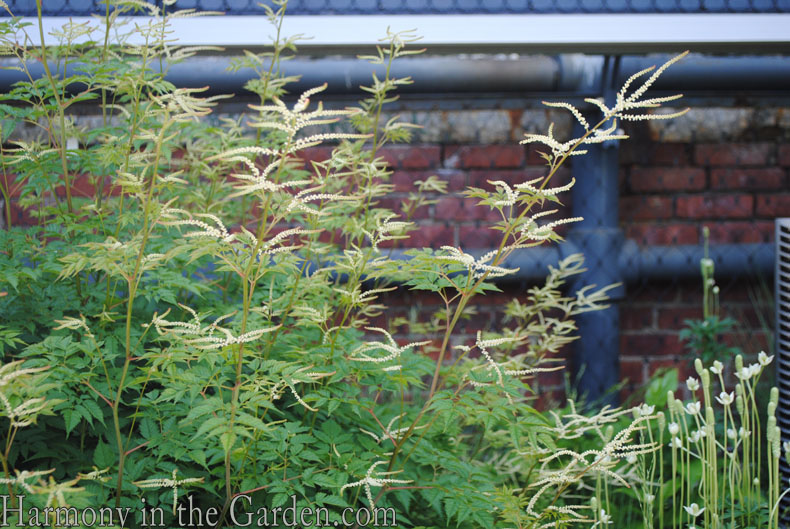


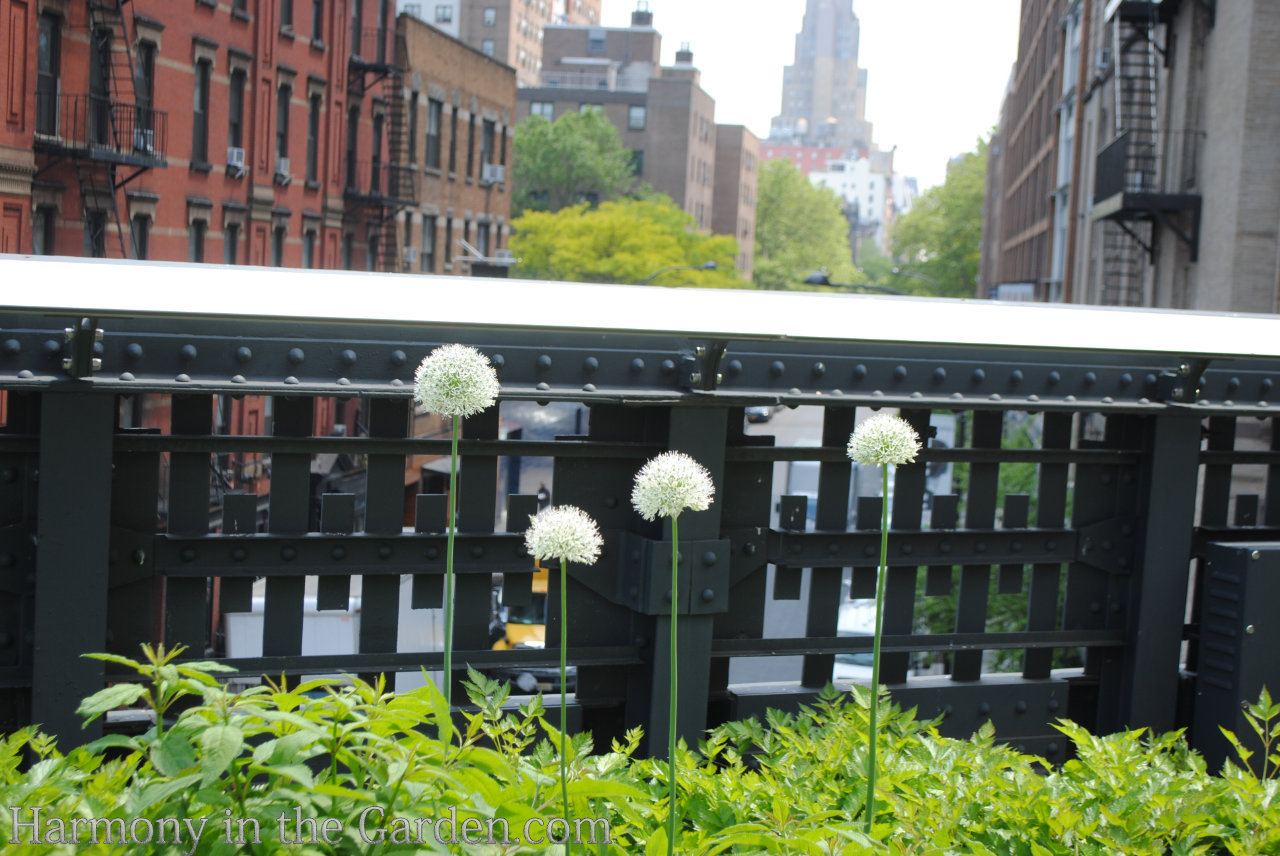
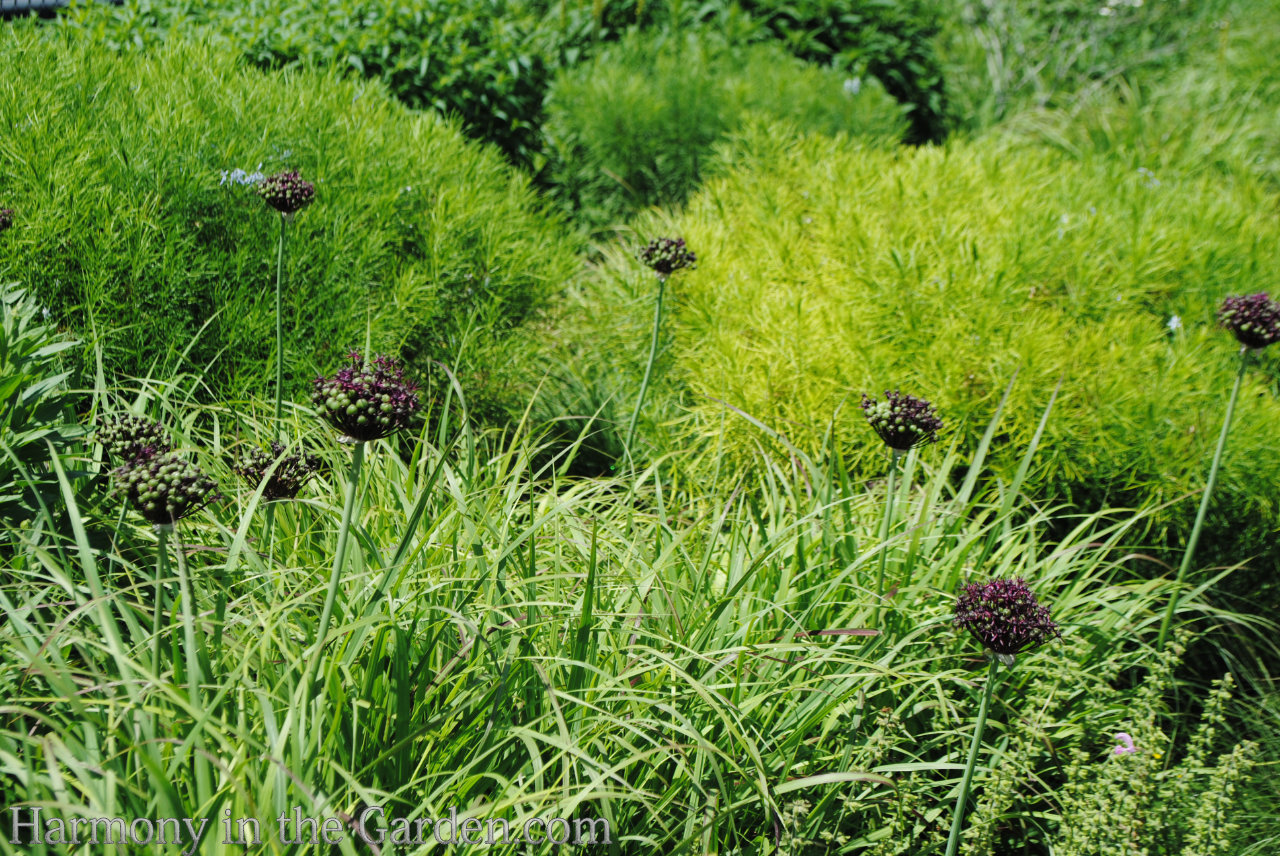
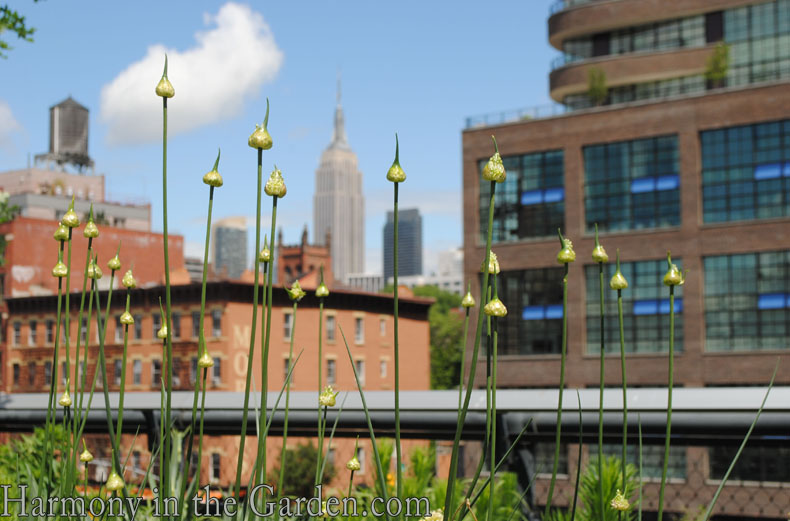
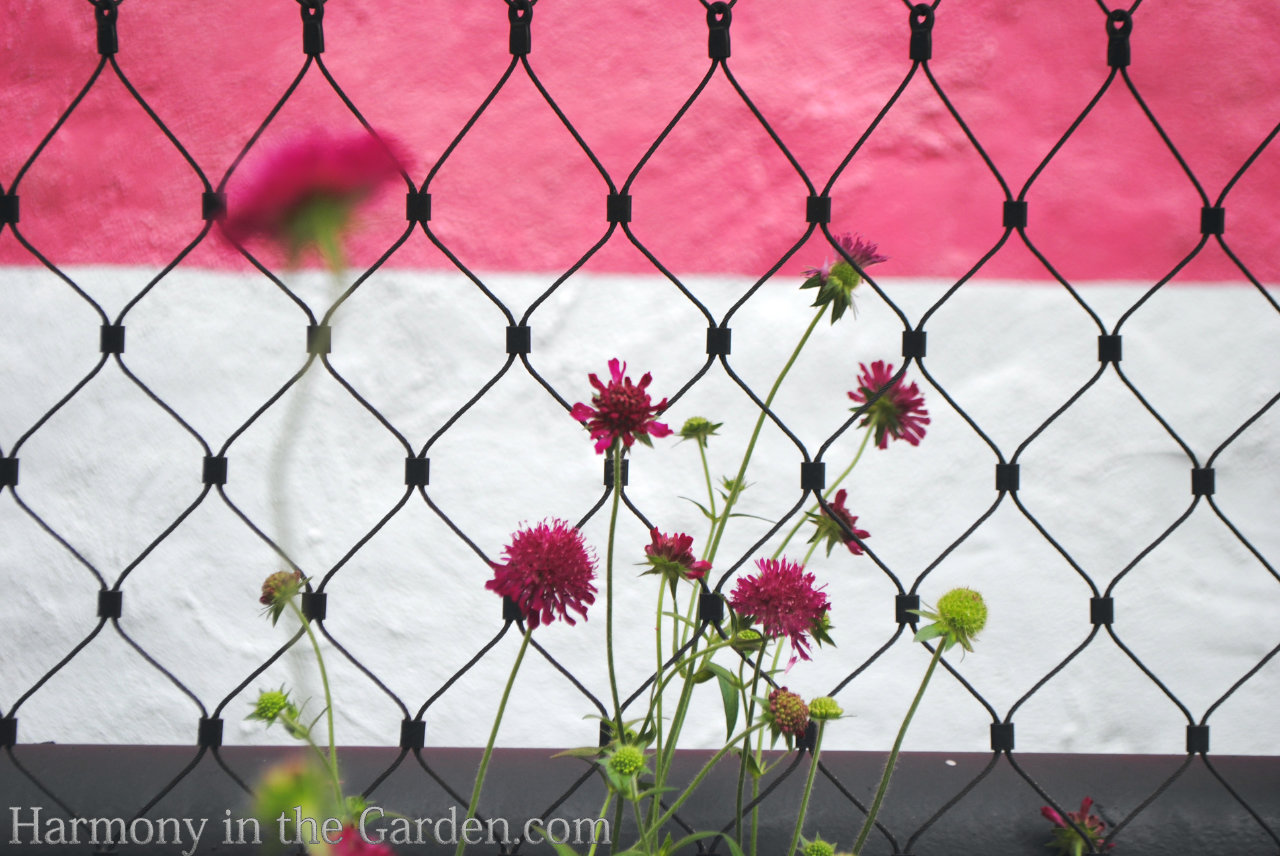
I can’t help but notice that the colors of so many flowers, berries and foliage echo the colors of the surrounding buildings, bricks, railroad ties and graffiti that lie beyond.
It’s a great example of how powerful subtle color echoes can be, creating unity and flow.
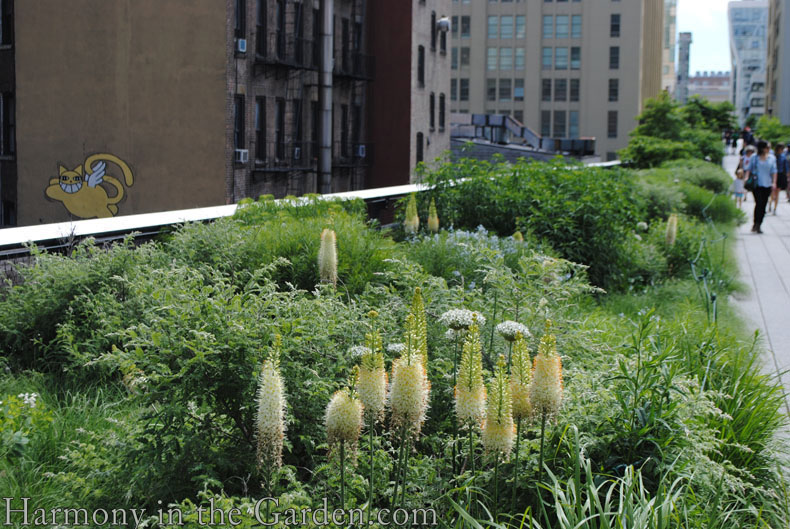
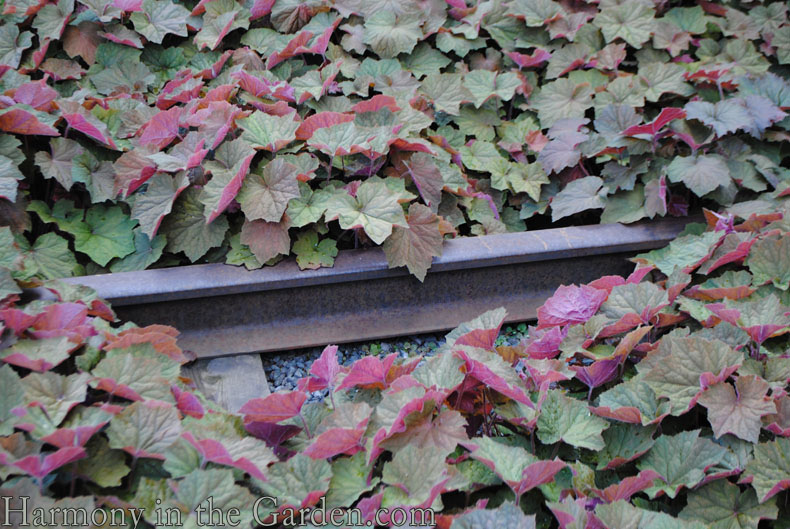


Even the people below, on street-level, can appreciate the garden. The cascading climbing hydrangea and clematis seductively drapes over the railing, almost touching the trucks picking up their daily deliveries.
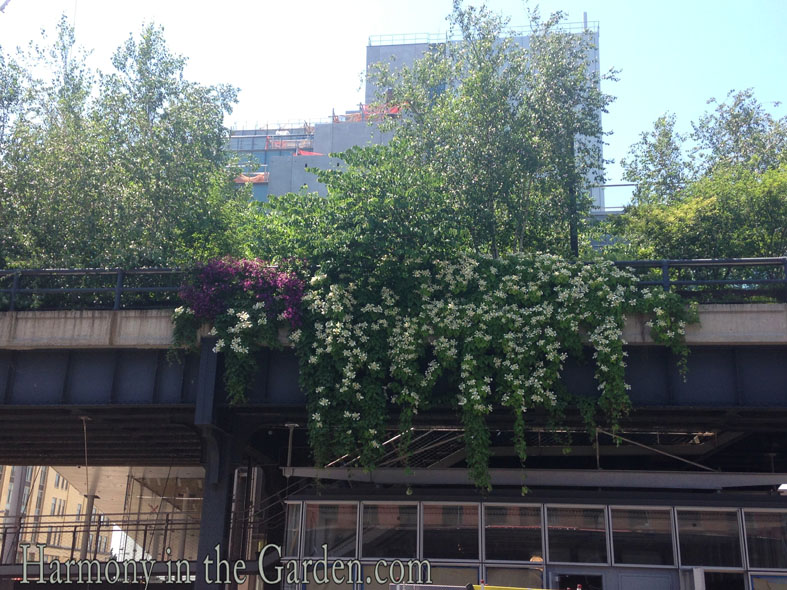

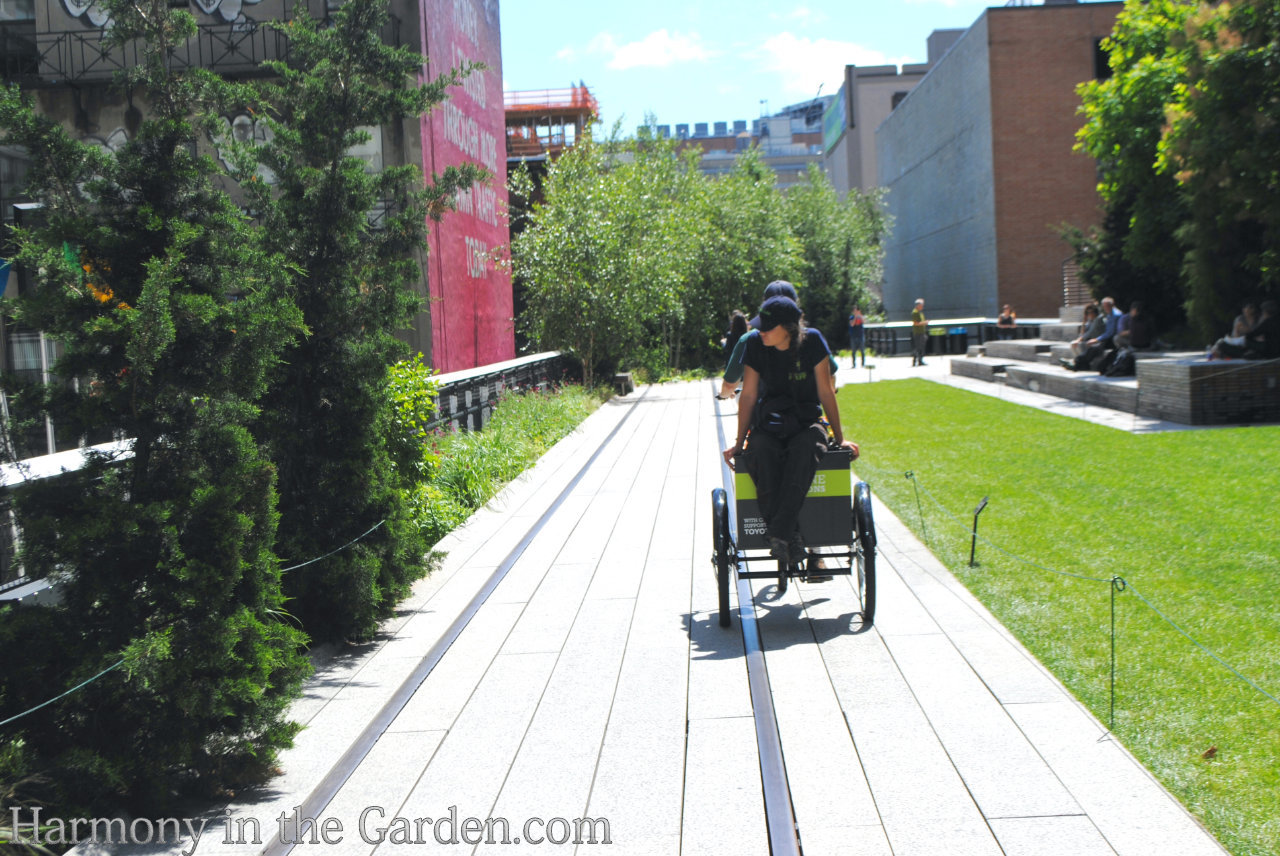
This most impressive garden is lovingly tended by an army of volunteers.
It’s so nice to see that after a long day’s work the volunteers are given a lift back where they can appreciate the garden in style.

I hope you’ve enjoyed seeing this garden through my eyes.
If you’d like to read more about Piet Oudolf, I highly recommend his latest book, Planting: A New Perspective.
It’s filled with detailed planting plans and inspiring groupings that are easily interpreted and adapted for smaller gardens.






17 Comments
This is genius. What an amazing eye and visionary. Wonderful post Rebecca!
Thanks Julie! Next time you visit your niece you’ll definitely have to stop by for a stroll. 🙂
This garden has been high on my list of must see gardens since it opened. I think your photos are among the best I have ever seen! And, Piet Oudolf is on top of my favorite designer list! Thank you for this beautiful tour.
Thank you, Cathi! I’m so glad you appreciated my tour and photos and I really hope you can visit it soon. From others who have been there many times I’ve heard June is the best time, followed by September. I hope to visit in the fall someday!
Rebecca, this is so coincidental. I was there on the 23rd, and I will go back probably tomorrow. I was blown away, much better than I had envisioned it.
I must have not walked near some of the plants you photographed as I didn’t see them. I was able to see a monarch butterfly, which made me really happy.
What an incredible project, I watched some of the videos on their website and they are so inspirational.
Thanks for teasing me with this post Rebecca. The High Line has been on my list of must-see gardens since right after it was created. Funny thing… we were visiting friends in Costa Rica shortly after the High Line opened and their nephew was also in town from NYC. He was part of the design team for this garden! The world is a very small and wonderful place.
Wow Sheila, small world indeed! I would love to hear his thoughts on how it went designing such a garden – it’s such an inspiration. You definitely need to see it – put it at the top of your list for next year’s travels!! 🙂
Yes, very inspiring. Think how fun it would be to be in Pete Oudolfs shoes everyday.
Glad you liked it, Greggo. Yes – can you imagine having that much talent? My head would explode.
Rebecca,
I went there with a bunch of my college friends last September just before I decided to start blogging. I think the high line and reconnecting with old friend may have been my inspiration. It was so pretty even at the end of the season. Your pics are great and make me want to go back asap!
Thanks, Patti! As much as I loved it during the spring I’d also really love to see it at the end of the season. I have no doubt the brilliant golds and yellows of the ammonia would be amazing to see.
Magnolias in NYC! Wow. I would never have thought. Interesting how the flowers seemed to match the graffiti. Very neat tour. Enjoy your stay there.
Thanks, Lisa – I loved the graffiti. It was probably one of the greatest gardens I’ve ever seen.
I am so eager to see the High Line, and I ate up every word of your post. We were in NYC the year before it opened, and I’m continually scheming to think of a way to get back up there and see it. Maybe this fall…
Pam – you must go back to see this garden!!! Must, must, must!!!
Thanks for sharing your visit. I was pleased to find that you showed more of the individual plants than I’ve seen in other reviews of High Line. I hope I can see it in person one day. James Corner also directed the development of Tongva Park in Santa Monica, CA, following some of the same principles used in designing High Line; however, the plant selections, while appropriate to SoCal, struck me as less complex.
You’re welcome, Kris, and I’m glad you enjoyed it. Everyone who lives around here told me I really lucked out with the timing as the garden is in its prime right now. It was nothing short of stunning. My daughter goes to school at LMU so I’ll definitely take a look at the Santa Monica garden next time I’m down there – thanks for the tip! (oops – I just googled the park and I realized I’ve actually been there last year with a mother/daughter event from her school. It’s a pretty interesting park, but you’re definitely right about the plant selections not being quite the same.)